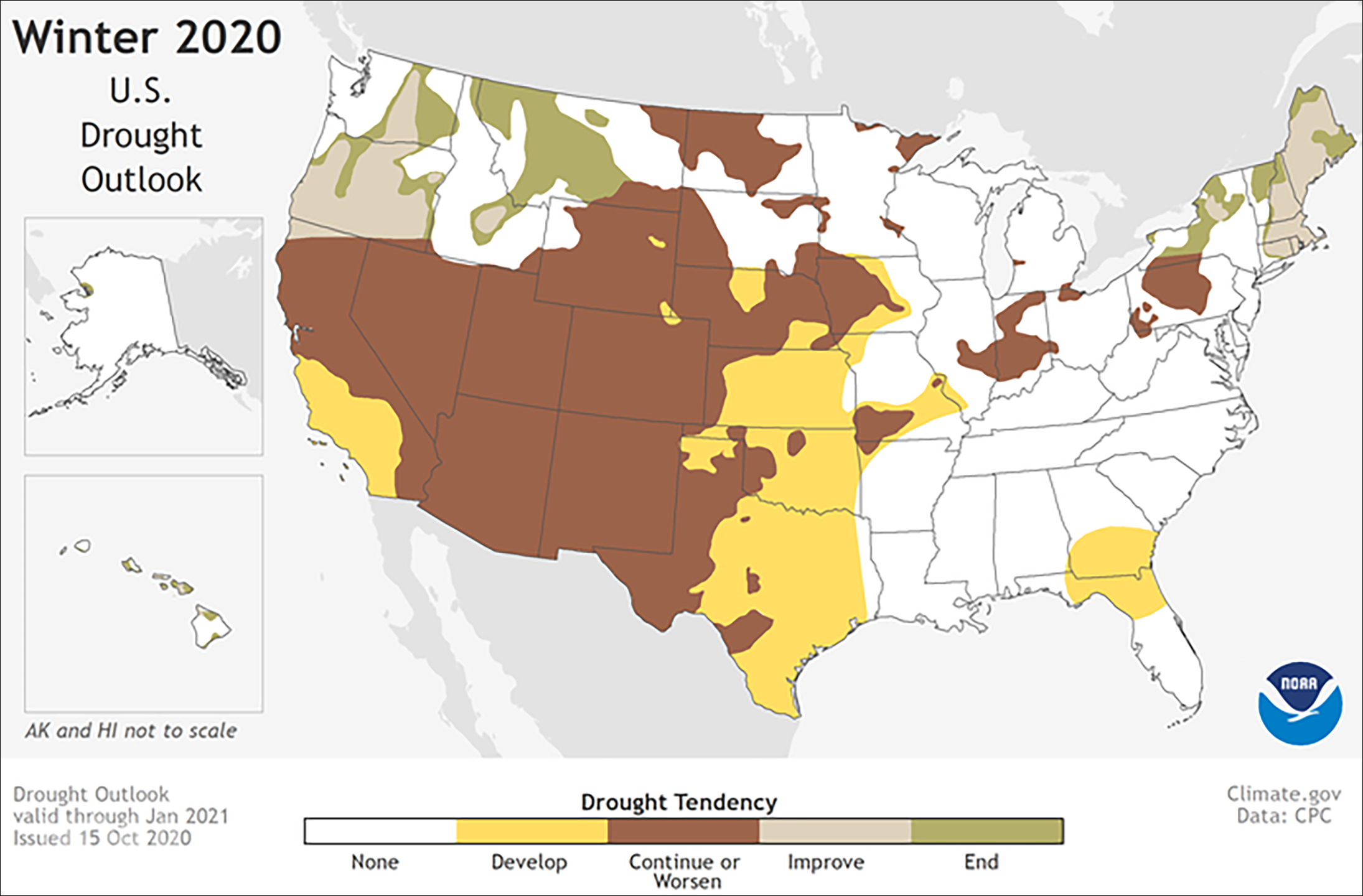This winter is likely to be warmer and drier than average for most of the continental United States, in line with the conditions of a typical La Niña year. This information is according to the most recent NOAA seasonal forecast released on 15 October.
Like the past 2 years, more than two thirds of the continental United States, northern and western Alaska, and Hawaii will likely experience hotter than average temperatures through January 2021. Southern Alaska and states along the northern U.S. border may see colder than average temperatures, and no confident temperature forecast can be made for the remaining regions.
Data through September indicate that “there is about 65% chance of the global temperature to rank as the warmest on record, with about a 35% chance of it being second warmest,” Ahira Sánchez-Lugo, a climatologist from NOAA’s National Centers for Environmental Information, told reporters during a 15 October teleconference. “La Niña tends to help cool a little bit the global temperatures…so we’ll have to wait and see what happens. But for right now, it is a very tight race.”
Widespread Drought Persists

La Niña years don’t tend to summon historic winter snowstorms like El Niño years do, but they can instead worsen drought conditions. NOAA confidently predicts that the southern half of the country will receive less precipitation than average this winter in addition to experiencing hotter-than-average temperatures. Warmer and drier conditions are expected to persist in those areas through May 2021.
“This is the most widespread drought that we have seen in the continental U.S. since September 2013,” Mike Halpert, deputy director of NOAA’s Climate Prediction Center, said during the 15 October event. “And the winter forecast doesn’t bode well for many of the areas around the nation currently experiencing drought with the exception of the Pacific Northwest, the Northeast, and Hawaii and Alaska.”
Thanks to a weak monsoon season and record-high temperatures, drought will likely persist in much of the western half of the United States and develop in Southern California, central and southern plains states, and northern Florida and southern Georgia. People living in the western United States have dealt with persistent drought for the past few years, which has contributed to severe wildfire seasons and heat-related health issues.
—Kimberly M. S. Cartier (@AstroKimCartier), Staff Writer
